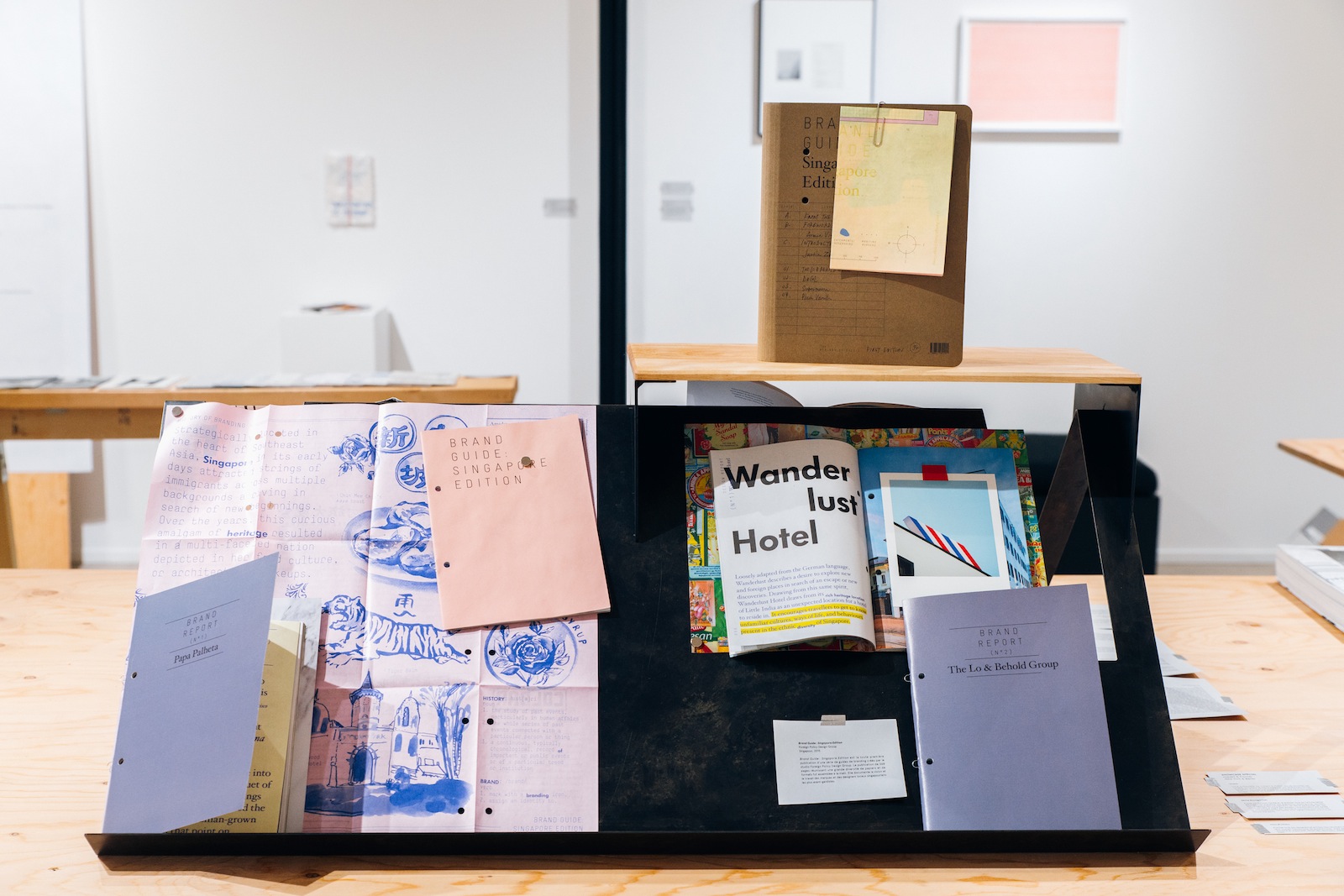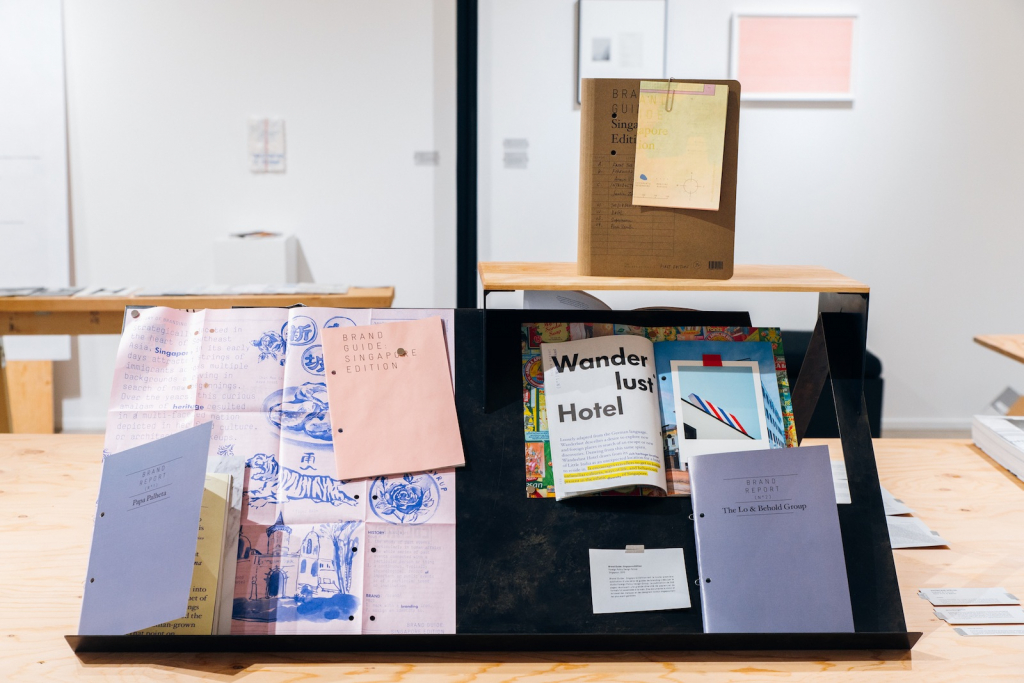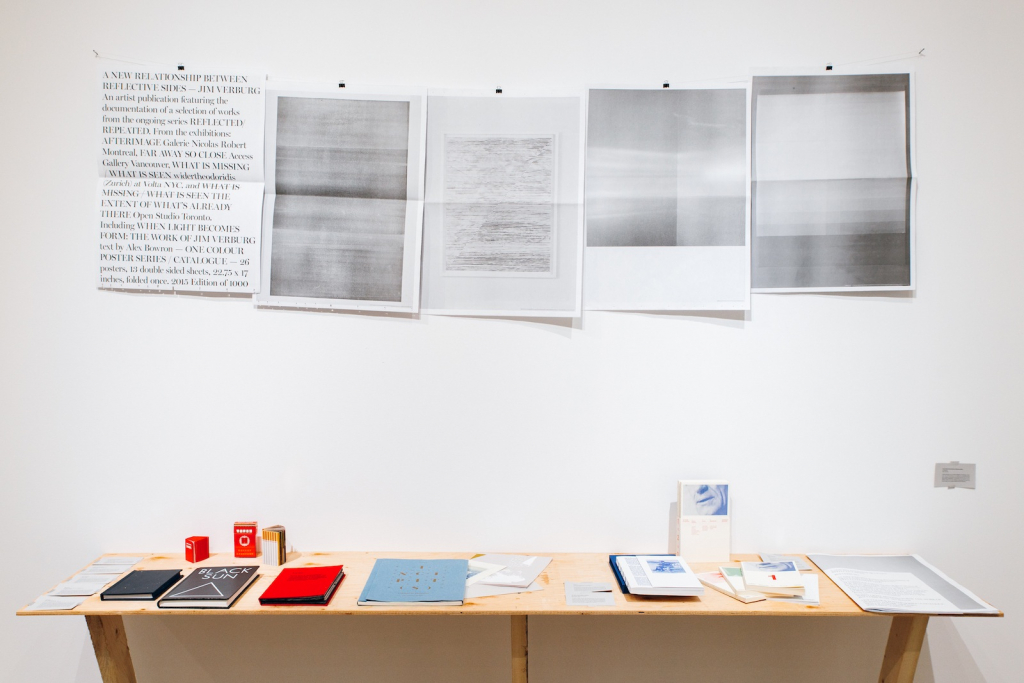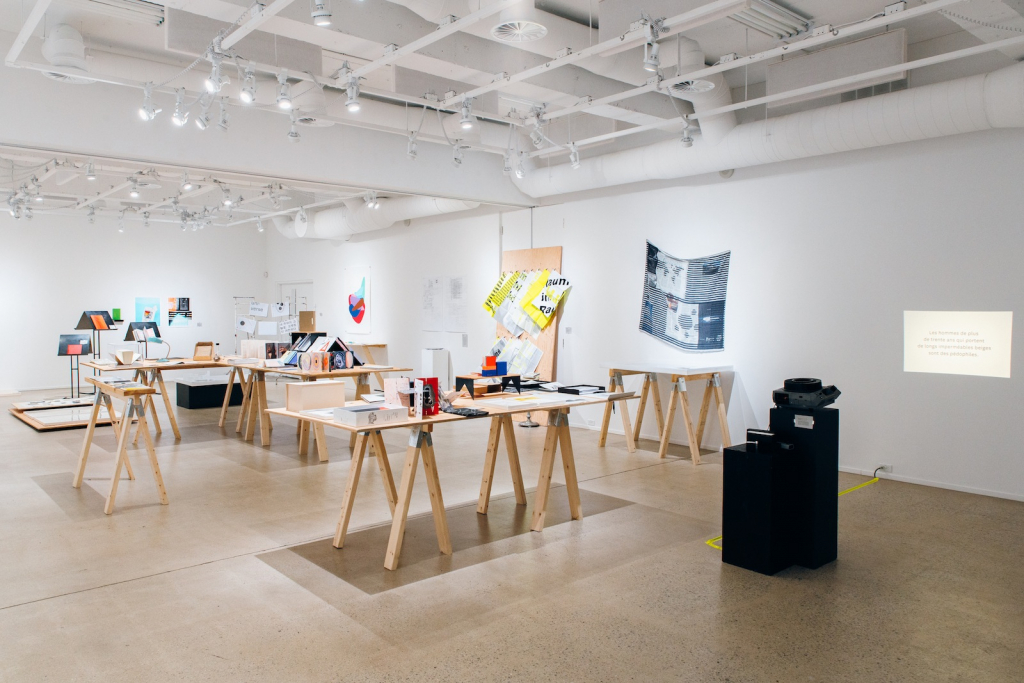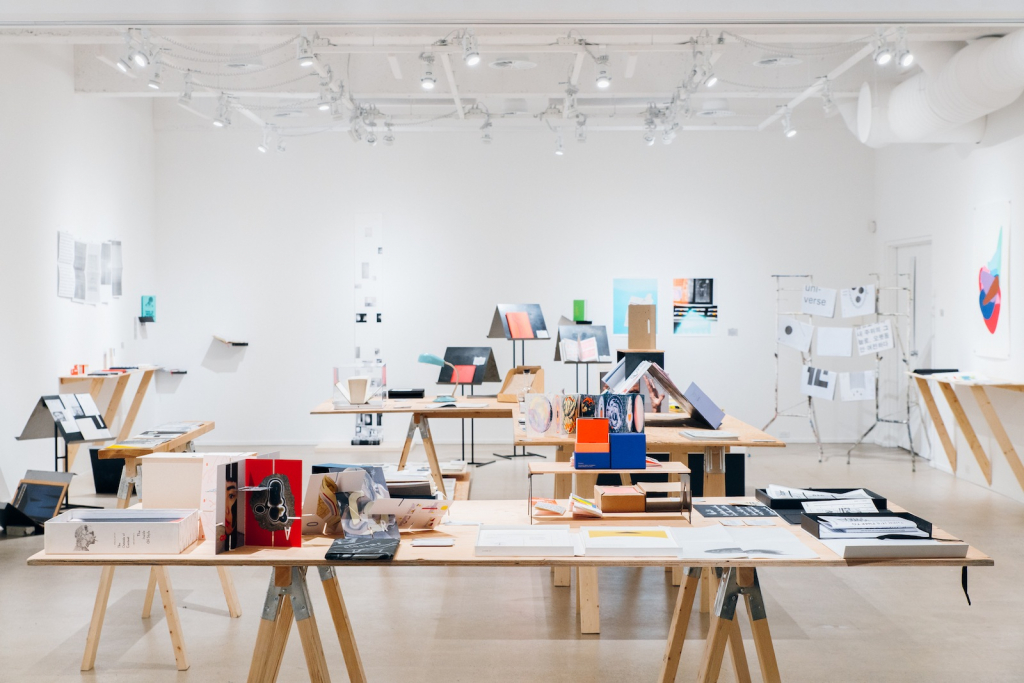Édition/Forme/Expérimentation : Rethinking the book
Édition/Forme/Expérimentation
Galerie UQO
Gatineau
February 24 –
March 24 2016
The Jean-Pierre-Latour Prize
Created in 2006 in memory of Jean-Pierre Latour (1951-2005), the Jean-Pierre-Latour Prize is awarded yearly to a graduate or under-graduate student studying at École Multidisciplinaire de l’images (ÉMI) in order to encourage the development of critical thought in writing a text related to practices of art and museology. Jean-Pierre Latour was an art critic and a part-time teacher at ÉMI from 1985 to 2005, and from 2000 to 2005, he was also a member of the editorial committee of ESPACE sculpture magazine, now called ESPACE art actuel, which in 2009, published the posthumous work Jean-Pierre Latour, critique d’art : voir et comprendre. When this first text was published, ÉMI and the part-time teacher’s union of Université de Québec en Outaouais, who award this prize, entered into a partnership with ESPACE, which has resulted in the prize-winning text being published in the magazine each year.
In this era when contemporary art is becoming acquainted with graphic design and adopting the tools of digital production, dissemination and distribution, Édition/Forme/Expérimentation considers the book as a creative medium that asserts its material and aesthetic form, and seeks to foster real exchange between various artistic practices. To this end, the exhibition features over 60 experimental publications from Québec and international publishers, designers and artists. Conceived of by Collectif Blanc, a Montreal-based curatorial platform Marie Tourigny and Catherine Métayer co-founded in 2013, the exhibition was presented in Gatineau from February 24 to March 24, 2016, at Galerie UQO at the Université du Québec en Outaouais. This brand-new gallery space, inaugurated in September 2015, supports and promotes the research, development and production of contemporary art on a local and international level. As such, Édition/Forme/ Expérimentation fits squarely within its mandate. The exhibition was recently presented at the Toronto Art Book Fair from June 16 to 19, 2016 and will travel to Montreal in the fall.
The exhibition presents a multi-faceted look at the book from the viewpoint of printers, designers and artists. Each work examines the book as a veritable creative medium, which, through its form or content, can deliver a truly artistic, aesthetic and at times a political message. By experimenting with form and pushing the boundaries of its material aspects such as format, structure and even the number of volumes, the book is considered and re-considered through various artistic approaches.
Like miniature architectural structures, these books take shape not only through our gaze, but through our touch as well. White gloves are available at the gallery’s entrance, and viewers are encouraged to physically handle, assemble and even smell the more than 100 books on view. This participatory exhibition gives visitors the opportunity to fully engage with each object. The gallery space is thus transformed into a library of wonders, a cabinet of curiosities and collected objects. Displayed on lecterns and wooden tables, the various books invite viewers to linger and be seduced by the colours and the surprising shapes and sizes. The following are some of the works that particularly caught our attention.
At the gallery’s entrance, a projection on a white wall shows a book’s pages being turned. Inscribed on each one is a quote, for example, “Les infirmières fument” (Nurses smoke), or “Tous les poètes ont un casier judiciaire” (Every poet has a criminal record). Marc-Antoine K. Phaneuf and Jean-François Proulx’s humorous and ironic Le Caroussel encyclopédique des grandes vérités de la vie moderne (The Encyclopaedic Carousel of Modern Life’s Great Truths) is a wall-based book that must be projected to be read. Its content, in slide form, is ephemeral.
Across the way, a bust of Elvis Presley observes us from its perch on a stack of cardboard boxes. Hanging above him, an ill-assorted collection of poster images, making reference to collage, are actually test prints and off-cuts. On the ground, a pile of pastel-green posters may be sifted through, like an extra-large novel with detachable pages. This installation, of the Montreal design studio Feed, has been photographed for a future publication. Moving along, the multitude of “art-books” at our disposal on tables and display stands is exciting and enticing. Sofia Grin’s Deconstructive Pop-Up Book is a collection of experimentally crafted works similar to Japanese kirigami, or three-dimensional drawings cut from sheets of paper. Along these same lines, Aurélie Painnecé’s le volume de proposes a book-work in the form of an ancient roll of horizontal and vertical paper meant for public reading. Here, the artist addresses how images in the digital age both fascinate and saturate us. Through images captured on her computer, she explains the entire creative process behind the production of a digital book. The narrative unfolds from top to bottom, suspended from the wall and accumulating on the ground, making the end of the text unreadable, hidden in fold after fold of paper.
In contrast to this imposing installation, Thomas Sauvin and Jiazazhi Press exhibit a miniature red and gold book titled Until Death Do Us Part placed in a Chinese cigarette case. In this book, the images depict the ceremonial role cigarettes play in Chinese weddings. French artist Irma Boom also favoured this miniature format. Intimately tied to her creative process, her Biography in Books is a comprehensive, annotated memoir that catalogues all her works, her books published throughout her career. With each new edition, this mini-publication will increase 3% in size.
Julie Picard’s inaccessible “book-object,” titled Sacs à surprises, presents a bit of a conundrum. Viewers are free to tear open the sealed envelopes, which are part of the work. However, opening the envelope will destroy the piece. The artist invites us to reflect on the work of art itself, on the importance or unimportance of its content, and on its permanence or preservation. Another of Picard’s works, titled Le Génie, features a newspaper article folded, origami-style, and slipped inside a glass vial. Enclosed, this unique book is inaccessible and its contents cannot be read.
Elsewhere, Studio Fludd presents Spécimen, an accordion-style book silkscreened in four colours. What sets Studio Fludd apart is its interest in combining art and science under a common theme in order to better understand and interpret the world around us. Art, therefore, becomes a tool for science, and vice versa. Their book presents a circular exploration of the unknown, from the cellular level up to the vastness of the universe. Finally, Archive of Modern Conflict has published a polemical version of the Bible titled Holy Bible. In this re-appropriation of the holy book, Adam Broomberg and Oliver Chanarin inserted new images that denounce the violence of many of the Bible’s passages and of the calamities of war.
Experimental books are not a recent medium. In the early 20th century, these books, usually artists’ books, were subjected to diverse avant-garde influences, particularly movements such as Dada and Fluxus. Endlessly appealing, the book’s form and content is re-examined in European and international festivals and events each year. Nonetheless, new issues are continually brought forth, namely those relating to the massive influx of images generated by today’s advertising and social media.
To re-think the book is to consider the support for its tactile and sensorial qualities, for its authenticity, its uniqueness in contrast to the abundance and standardization of the image. It is to bring back paper, printing techniques and typography, the precision of the image and hand bookbinding techniques. It also is to unite the dialectic between content and form, between various creative fields such as publishing, and the digital and visual arts. As such, these interdisciplinary discussions attempt in a way to counter the individualism that is sometimes part of creative practice, and to question the effects of digital technology on the development of the book, and its impact on our society.
Could re-thinking the book through this type of experimentation be the kind of creative act that breathes new life into shared experience and resists individualism in art and the barrage of images within contemporary society?
Translated by Jo-Anne Balcaen
Louise Brunet is pursuing her MA in Museum Studies in a joint program at the Université du Québec à Montréal and the Université de Montréal. Born in Vienne, France, she also has a dual degree in Law and Art History. Her current area of research focuses on the challenges linked to the conservation, preservation and dissemination of ephemeral urban art.





